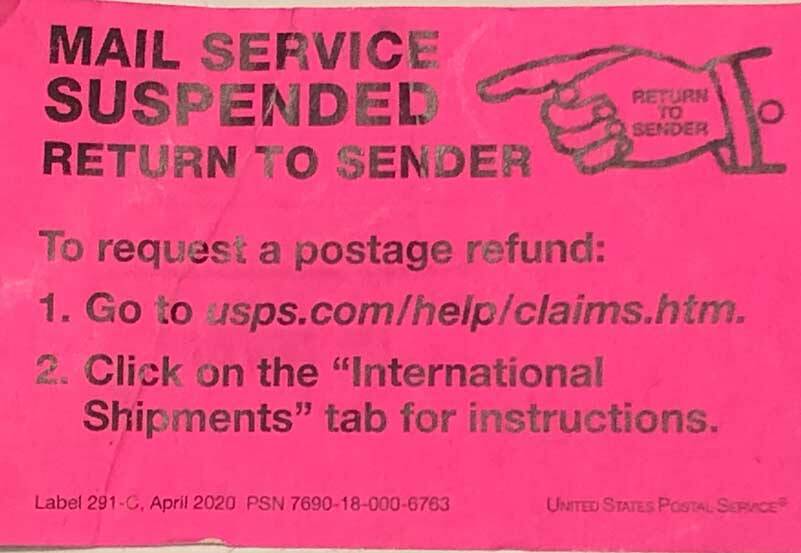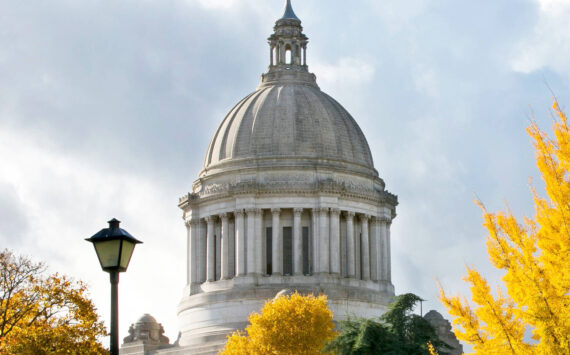By Morf Morford
Tacoma Daily Index
Neither snow nor rain nor heat nor gloom of night stays these couriers from the swift completion of their appointed rounds.
Among a million other changes and upheavals across the country or around the world, supply chain problems, cancelled flights and labor shortages, one more change, one that comes to every front door and workplace is in motion; the US Postal Service.
You may have noticed that standard postal delivery is slower – and costlier – than it was just a few weeks ago.
This is deliberate.
At a time when more of us are spending more time at home, and many are working from home, our prompt, daily and affordable postal delivery system is more important than ever.
Future planned changes include reduced post office hours and closures of mail-processing facilities in Redmond, Washington, and 17 other cities nationwide.
Slowdowns began Oct. 1, with some first-class mail arriving two days later than usual.
Attorneys general from 19 states and the District of Columbia have filed a legal challenge to stop the U.S. Postal Service from slowing down the mail.
Amazon has gotten us accustomed to two days, one day, even same day delivery. But the USPS is going the opposite directions – from three days to five days,
Many blame the current Postmaster General – and demand that President Biden fire him, but he can only be fired by the Postal Service’s nine-member board of governors.
Like every industry that relies on transportation to get its job done, the USPS is shifting to all-electric vehicles.
The agency’s 10-year plan calls for most delivery vehicles to be replaced with electric models over the next decade, and to have a fully electric fleet by 2035. The first new electric vehicles are expected to be in use sometime in 2023.
Even though few of us write letters, we still rely on the postal service. More than 1 in 3 Americans say they plan to vote by mail, in the next election.
Many states – Colorado, Hawaii, Oregon, Utah and Washington, for example—allow all elections to be conducted by mail.
Three states—California, Nebraska and North Dakota—permit individual counties to opt into conducting elections by mail.
Many millions of us rely on daily home delivery for payments, medicines and online purchases.
The USPS is one of the largest employers in the country – with over 500,000 employees – and the USPS is the number one employer of veterans.
And if you think reliable and affordable mail delivery is important to urban and suburban communities, it is far more important, if not urgent, for rural communities.
In 2020, U.S. households received almost a billion pieces of mail, and sent 7 billion.
Mail sent and received by households constituted 81% of total mail in 2020.
And fifty-five percent of the mail households received was sent as Marketing Mail.
Should the USPS pay for itself?
Some critics of the USPS insist that it should pay for itself.
That’s an interesting argument for several reasons. One is that no other government would hold that as a criteria for their postal service – or any other government service or agency.
Would schools be expected to pay for themselves?
Would law enforcement or the military be expected to pay for itself?
It is a strange and certainly unrealistic expectation.
The postal service is, ahem, a service – an essential service, one every stable society provides for its citizens.
We may or may not have children in school, and we may or may not call or need law enforcement, but we all need and use the mail.
Banking at the post office?
Besides standard mail delivery, the U.S. Postal Service has quietly begun offering a handful of new or expanded financial services in four cities, a potential first step toward a return to once common postal banking.
The Postal Service offered banking services from 1911 to 1967.
Possible future services include check cashing, bill paying, ATM access, expanded and improved money orders and expanded wire transfers.
Select Postal Service locations in Washington, D.C.; Falls Church, Virginia; Baltimore; and the Bronx, New York, are participating.
Again, this is most important in rural areas. Many people do not have easy access to banks, but most can find a post office. Sixty-nine percent of U.S. census tracts with post office retail locations — representing 60 million people — do not have community bank branches.
About 8.4 million households, or 6.5 percent of households in the U.S., are “unbanked,” according to the Federal Deposit Insurance Corp., and 18.7 percent of U.S. households (24.2 million) are “underbanked” — meaning they may have checking or savings accounts but also use financial products and services outside the banking system, such as payday lenders.
With almost 1 in 4 American households unbanked or underbanked, advocates for postal banking see a huge opportunity for the Postal Service to provide access to an essential financial system while solidifying its own economic foundation.
Snow and rain or heat might not stop the post office, but political infighting or inertia could.
Postal cats
Did you know there is a history of cats being paid to hang out in post offices?
You can see a full story here: https://www.smithsonianmag.com/smart-news/brief-history-post-office-cats-180958061/?.






